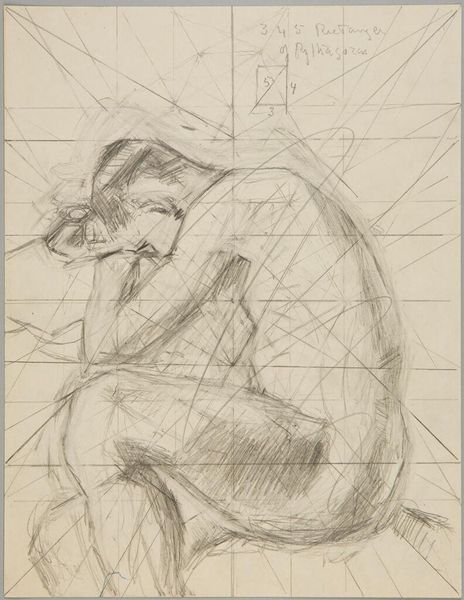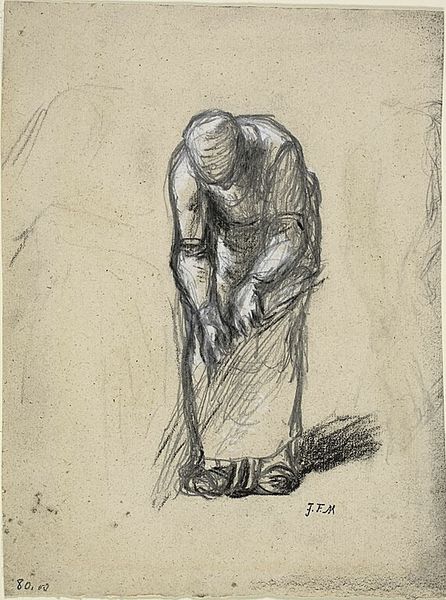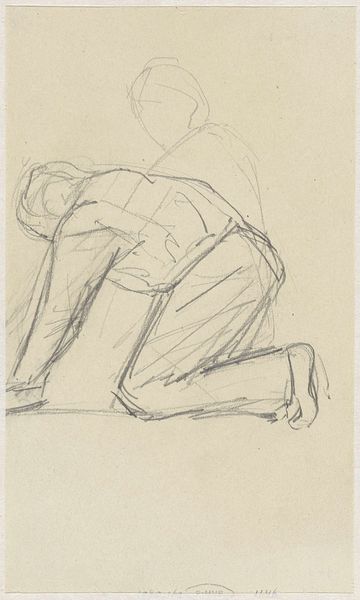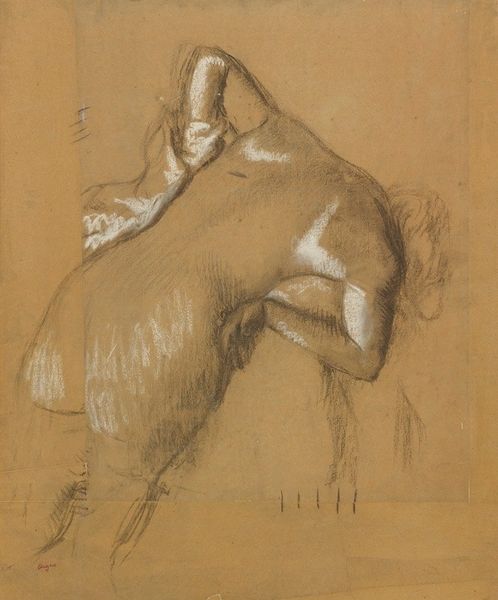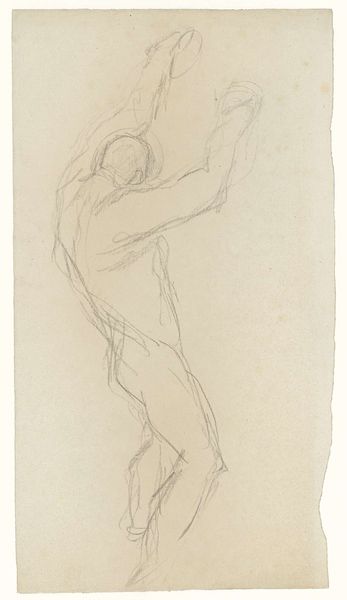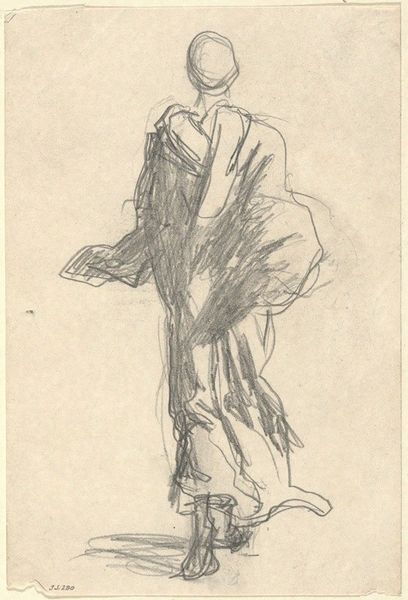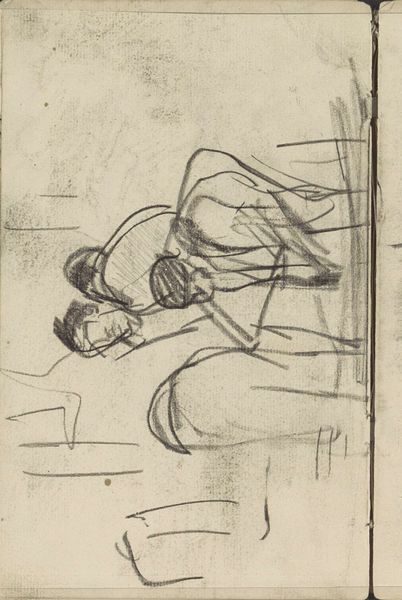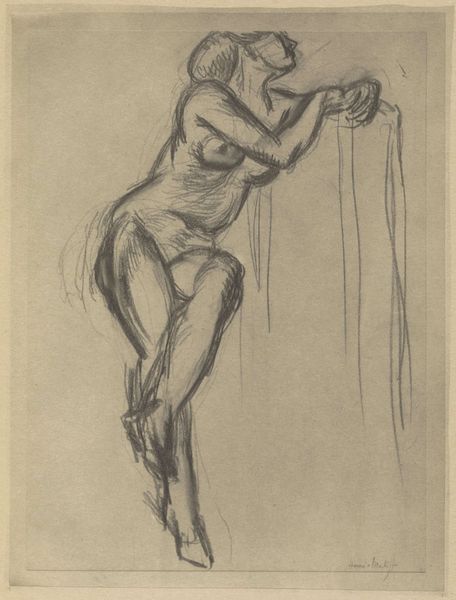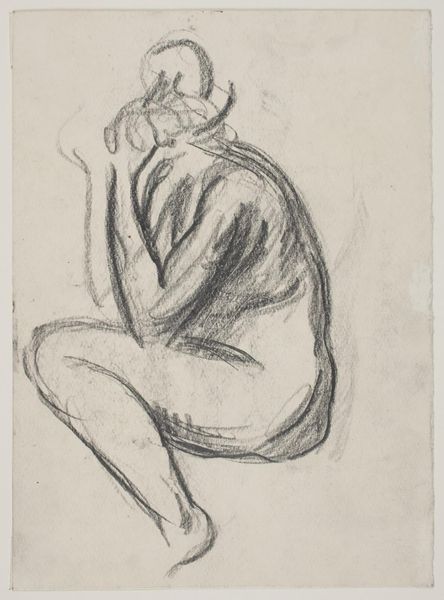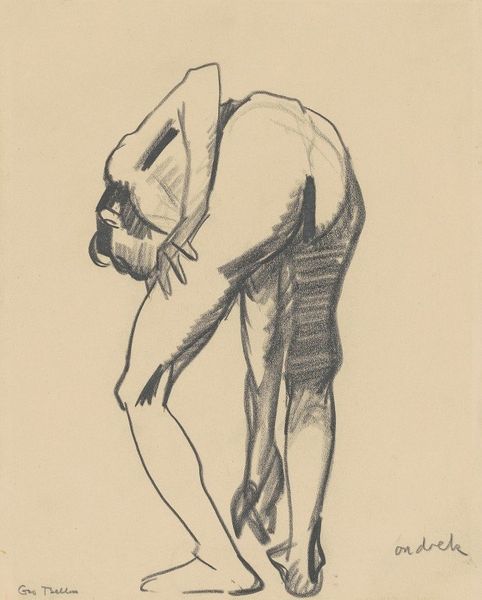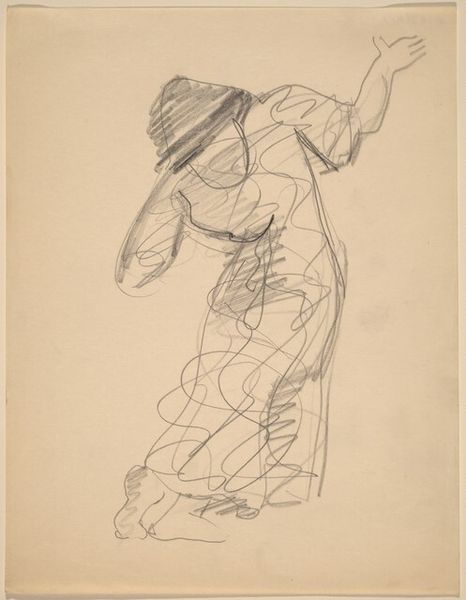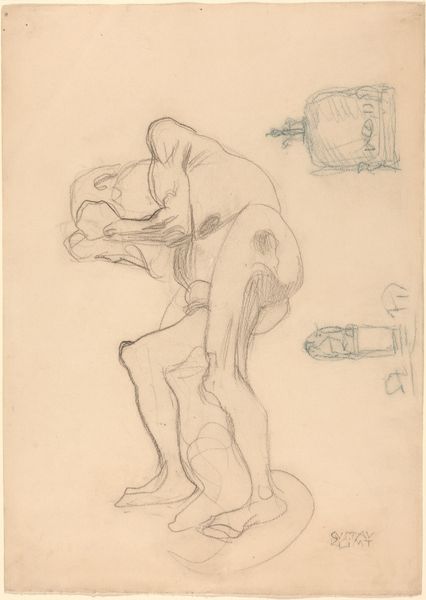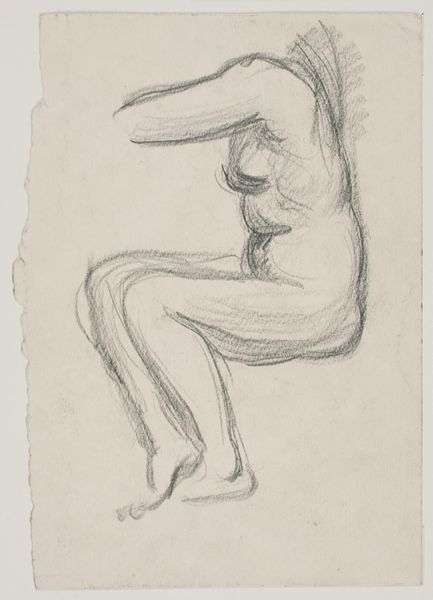
drawing
#
drawing
#
figuration
#
academic-art
Copyright: Public Domain: Artvee
Curator: Here we have Pierre Puvis de Chavannes' "Homme vu de dos incliné vers la gauche," dating from about 1854-1855. It's a charcoal drawing showcasing the artist's academic approach. Editor: Immediately, I sense a poignant fatigue. The slumped posture, the almost painful bend of the back. It’s weighted with weariness, you know? A blue mood. Curator: That’s perceptive. Given the academic style, we see the artist likely focused on anatomical accuracy and the classical ideal. Yet, considering its historical context, this posture could also represent the burden of labor and the social inequalities of 19th-century France. The figure’s anonymity allows him to represent an archetype. Editor: Absolutely. He's every stooped laborer, every burdened soul. The visible grid behind him kind of heightens that sense, too. It's like he’s trapped within some kind of system or structure. Do you think that was on purpose? Curator: Possibly, though the grid might simply be a preparatory element. The artist used these grids to measure proportions and achieve realistic representation. The artist, however, studied with Eugène Delacroix. Knowing this can perhaps alter one's perception of his works to reveal not only a devotion to neoclassicism but also hints of Romanticism. Editor: It gives him depth! I appreciate seeing past the formal pose to what feels like the man's inner experience. I can feel that ache, that resignation, almost. Curator: Yes. We’re seeing here a complex interplay between idealized form and potentially a subtly implied social commentary. Editor: Which proves art doesn't live in a vacuum, does it? It is this dance of aesthetics and meaning that gives "Homme vu de dos incliné vers la gauche" its haunting power. It's beautiful. Curator: Indeed. Understanding both the historical framework and the possible expressive nuances enhances our experience of it. I hope our listeners come away with an enrichment and interest in academic styles from the period.
Comments
No comments
Be the first to comment and join the conversation on the ultimate creative platform.
